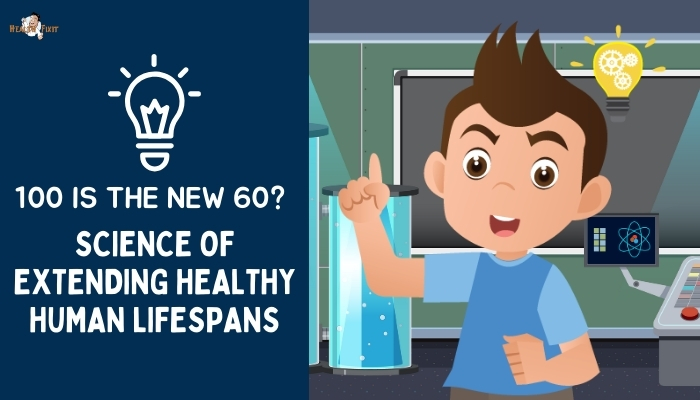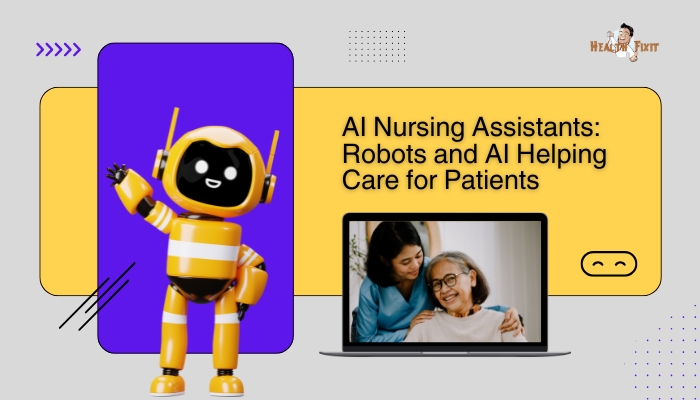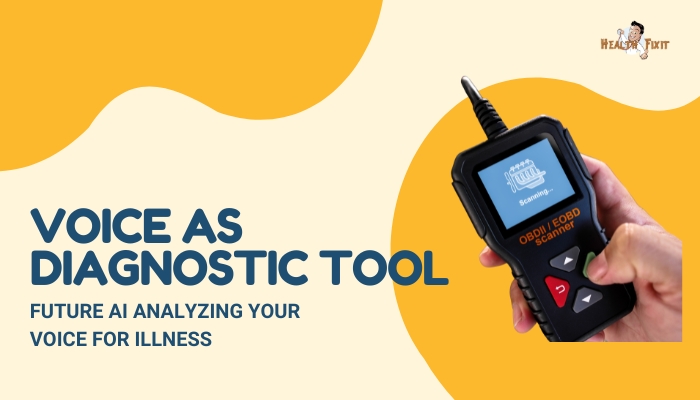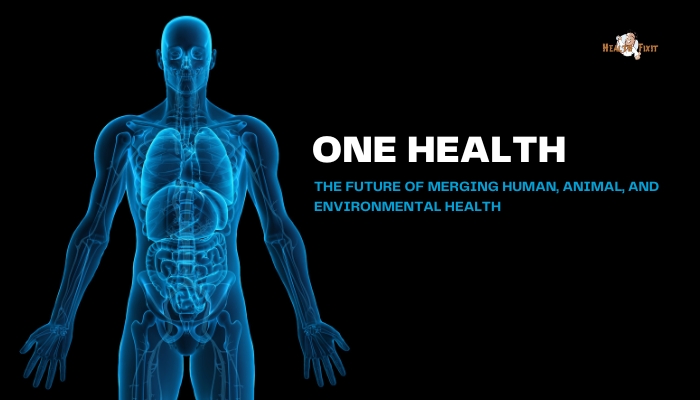Introduction
Many adults share a hope of staying strong and alert as they age. Modern science is advancing to the point where some specialists think 100 could soon feel like 60.
This does not mean stopping aging entirely. Instead, researchers want to delay common complications such as cardiovascular problems, cognitive decline, and joint damage.
Leading studies highlight ways to keep the body in better shape. They explore nutrition, genetics, and new drugs.
They also examine movement, mental well-being, and other everyday practices that maintain vitality.
This article describes how researchers approach aging from many angles. It shows that reaching 100 in good health may be possible for more people if these efforts succeed.
We will look at the biology of aging, the influence of diet and exercise, potential “anti-aging” drugs, brain health strategies, and essential social connections.
We will also consider ethical and personal viewpoints. Each section offers practical suggestions to apply while awaiting future breakthroughs.
The Science of Aging
Aging involves gradual change in how cells function, how tissues repair themselves, and how organs adapt to stress. Scientists focus on several core processes to understand aging:
- Genome Instability: The genetic material in cells undergoes damage with time. Cells fix or discard damaged DNA, but these safeguards weaken. This can lead to harmful mutations or cell malfunction.
- Cellular Senescence: Some older cells stop dividing but remain active. They release inflammatory signals and disrupt tissue balance. These “senescent” cells grow more common with age.
- Telomere Shortening: Telomeres are repeating segments of DNA at chromosome ends. Each cell division trims telomeres. Critically short telomeres signal cells to stop dividing. This lowers the ability to renew tissues.
- Mitochondrial Decline: Mitochondria produce energy. They become less efficient over time and can create damaging by-products. This can accelerate wear on cells.
- Protein Misfolding: The body needs properly formed proteins to run processes. Aging can cause proteins to fold incorrectly, making them dysfunctional. Some degenerate into clumps.
When these aging mechanisms escalate, the body weakens and becomes prone to disease. Conversely, slowing or fixing these processes is thought to extend overall health. This line of research motivates a new field sometimes called “geroscience,” which unifies aging biology with disease prevention. If interventions help the body manage or delay damage, older adults may reach 90 or 100 with less disability.
Diet and Lifespan Extension
Caloric Restriction and Fasting
Laboratories discovered that restricting calories—without malnutrition—can extend lifespan in some animals. This inspired many studies in humans. Reduced calorie intake may ease metabolic stress and trigger protective cell responses:
- Autophagy: Cells clear out old proteins and organelles for recycling.
- Improved Insulin Sensitivity: Less strain on the pancreas and fewer spikes in blood sugar can guard against diabetes.
- Lower Chronic Inflammation: Body systems remain calmer, which benefits arteries, joints, and more.
Some people adopt strategies like time-restricted eating or intermittent fasting. In time-restricted approaches, individuals eat meals within a shorter window (e.g., 8 hours) and fast the rest. In intermittent fasting, they reduce calories significantly one or two days weekly. Though results vary, these patterns may promote weight control and metabolic improvements.
Balanced Nutrient Intake
Calorie intake is not the only factor. Nutrient variety and quality are also key to healthy aging. Many studies point to the following:
- Fruits and Vegetables: They supply vitamins, minerals, and antioxidants that help cells cope with stress.
- Whole Grains: Fiber in whole grains helps stabilize blood sugar. It also supports beneficial gut bacteria.
- Healthy Fats: Unsaturated fats from sources like fish, nuts, and olive oil can protect heart function.
- Protein Control: Some evidence suggests moderate protein intake, especially from plant sources, may aid longevity.
Practical Suggestions
- Start by making small cuts in daily calories—reducing sugary beverages or large portions.
- Adopt a regular schedule for meals, perhaps an 8-hour eating window.
- Favor whole foods over refined products, focusing on color and variety.
- Include lean proteins or plant-based proteins, ensuring sufficient amino acids without large amounts of saturated fat.
Physical Activity: A Key to Longer Life
Exercise benefits are well-known, but regular movement may also slow or offset many age-related changes:
- Cardiovascular Health: Exercise strengthens the heart and keeps arteries flexible.
- Muscle Mass and Bone Density: Resistance activities help maintain muscle and bone density, cutting fracture risk.
- Metabolic Health: Physical activity burns excess calories, stabilizes insulin levels, and reduces excess body weight.
- Brain Function: Exercise improves blood flow to the brain, potentially lowering dementia risk.
Types of Exercise
- Endurance: Activities like jogging, cycling, or brisk walking support the cardiovascular system.
- Resistance: Weightlifting or bodyweight exercises preserve muscle strength.
- Flexibility: Stretching or yoga helps maintain joint range of motion.
- Balance: Tai chi or specific balance drills reduce fall risk.
Experts recommend at least 150 minutes of moderate-intensity exercise weekly, plus muscle-strengthening sessions. Some older adults find it helpful to track steps with a pedometer or watch. Even daily walks may extend health over the long run.
Anti-Aging Drugs and Supplements
Scientists are testing compounds that target aging biology in specific ways. While no single “longevity pill” has official approval, these candidates show promise:
Metformin
Originally a diabetes medication, metformin improves insulin sensitivity and might reduce inflammation. Researchers launched a major trial to see if older adults on metformin experience fewer age-related diseases. If so, it suggests that controlling metabolic stress may delay various conditions.
Rapamycin
Rapamycin reduces activity of mTOR, a signaling pathway that shifts cells from growth to repair mode. In animal studies, rapamycin extends lifespan. However, it can suppress immunity at higher doses. Scientists are finding ways to balance benefits against potential risks.
Senolytics
Senescent cells accumulate in tissues, raising harmful inflammatory markers. Senolytic drugs seek to remove these “zombie” cells. Early research in mice shows better kidney function, improved exercise capacity, and extended lifespan when senescent cells are cleared. Early human trials examine safety.
NAD+ Boosters
NAD+ is a molecule important for cell energy and DNA repair. Levels drop with age. Boosters such as nicotinamide riboside or nicotinamide mononucleotide can elevate NAD+ in older adults, potentially improving metabolic resilience and overall vitality. Results are mixed but show potential.
Antioxidant Supplements
Although once popular, antioxidant pills have not consistently shown lifespan extension in trials. Some data even suggest that excess antioxidant supplementation might interfere with beneficial stress responses from exercise. Fruits and vegetables remain the best source of natural antioxidants.
Genetics and the Future of Longevity
Certain genes appear tied to extreme longevity. Studying centenarians (people 100 years or older) can reveal patterns:
- FOXO3: Involved in stress resistance. Specific variants are linked to better aging.
- APOE: A gene that shapes cholesterol processing. Some variants correlate with either higher or lower dementia risk.
DNA testing or genome sequencing may one day guide personalized strategies. A person with certain genetic traits might benefit more from specific diets, exercises, or drug regimens. Gene-editing tools, such as CRISPR, may also eventually correct high-risk variants. These ideas remain at an early stage, but the future may see tailored therapies that align with an individual’s genetic makeup.
Brain Health and Cognitive Vitality
Staying mentally sharp is crucial to a fulfilling older adulthood. Research indicates that age-related cognitive decline can be slowed with positive lifestyle factors:
Lifelong Learning
- Regular engagement with challenging tasks (e.g., puzzles, reading, creative hobbies) keeps neural connections active.
- Some older adults explore new languages or instrument lessons to stimulate the brain.
Social Interaction
- Frequent social contact lowers stress hormones and supports mental function.
- Volunteer work, group classes, or maintaining close friendships can protect cognition.
Good Sleep
- Deep, uninterrupted sleep helps consolidate memories.
- Chronic sleep deficits raise the risk of mental decline and mood problems.
Potential Brain-Boosting Approaches
Some nutrients, such as omega-3 fatty acids, might protect neurons. Physical activity aids blood flow and may enhance hippocampal volume (an area tied to memory). Ongoing trials also look at whether certain “nootropics” or specialized diets slow mild cognitive impairment.
Lifestyle Medicine: A Holistic Framework
Although targeted drug therapies capture headlines, doctors emphasize that lifestyle factors remain essential. “Lifestyle medicine” is an approach that aligns major daily habits with long-term health. It typically includes:
- Nutrition: Whole-food meals, lower refined sugars, appropriate calorie intake
- Physical Activity: Regular exercise routines to keep muscles and bones fit
- Sleep Hygiene: Consistent bedtime routines, avoiding caffeine close to night
- Stress Management: Simple breathing exercises, hobbies, or short relaxation breaks
- Avoiding Harmful Substances: Smoking cessation and moderate alcohol use
When these core pillars are in place, any “longevity interventions” have a stronger foundation. Some data also show that lifestyle changes can modulate gene expression, highlighting that healthy choices may shift the body’s internal processes in beneficial directions.
Potential of Regenerative Medicine
Stem Cells and Tissue Repair
Certain labs explore how stem cells might regenerate damaged tissues. Stem cells have the unique capacity to become many cell types, possibly fixing worn areas in organs. However, uncontrolled cell growth can pose a safety risk, so scientists must refine methods to ensure stability.
Partial Epigenetic Reprogramming
Another line of research tries to “reset” older cells to a younger state by manipulating gene expression patterns. Known as epigenetic reprogramming, this approach has rejuvenated specific tissues in animal studies. The goal is to refresh cells without making them revert to a dangerous, undifferentiated form.
3D Bioprinting and Organ Replacement
The ability to fabricate or grow tissues outside the body might solve organ failure in older adults. For instance, 3D bioprinting uses a person’s cells to create scaffolds that form tissue replacements. This remains experimental, but it suggests a possible path to handle age-related damage by supplying new organs or tissues.
Social Connections and Emotional Wellness
Health is not purely biological. Social engagement and mental resilience also shape longevity:
- Loneliness increases stress and can undermine immunity. Strong friendships or community links might extend life by offering both support and a sense of purpose.
- Positive Outlook encourages problem-solving and helps people manage health challenges. Studies show that more optimistic adults may recover from illness faster.
- Volunteer Activities or involvement in group events keeps the mind active and fosters feelings of belonging.
Communities with many long-lived people, sometimes called “Blue Zones,” often emphasize social ties. Individuals share meals, provide neighbors with help, and uphold cultural traditions. These practices appear as protective as many medical interventions.
Healthcare Innovations and Personalized Prevention
Early Detection
Healthcare systems now use advanced scans, blood tests, and genetic markers to pick up diseases sooner. For instance, wearable devices can monitor heart rhythms or sleep patterns, alerting individuals to health changes before they worsen.
Precision Medicine
Physicians can analyze a person’s genes, lifestyle, and biomarkers to tailor prevention strategies. This might include adjusted doses of certain medications, specialized diets, or targeted exercise programs that fit the individual’s biology. Such customization could slow disease progression more effectively than standard guidelines.
Telemedicine and Digital Tools
Older adults who struggle with mobility can access medical consultations via phone or video. Apps track medication schedules or remind users to stay active. As telemedicine expands, seniors can remain at home longer with consistent medical oversight.
Overcoming Barriers and Common Misconceptions
Cost and Access
High-end longevity clinics and advanced therapies may be expensive, creating inequities. Public health leaders emphasize that regular exercise, balanced eating, and avoidance of smoking remain affordable and effective. These basic steps can offer major gains for most communities, even without expensive supplements or procedures.
Quick-Fix Myths
Some products claim to deliver remarkable youthfulness with minimal effort. In reality, the best evidence suggests consistent activity, smart diet, and stress reduction over the long term yield results. Any new anti-aging drug or therapy will likely still require a healthy foundation to succeed.
Aging as a Natural Process
Not everyone aims to slow aging aggressively. Many see aging as normal, focusing on quality of life rather than postponing every sign of maturity. Respect for personal choices is important. Even if we extend lifespan, feeling content and maintaining a sense of purpose are essential.
A Glimpse into the Future
Longer Careers and Later Retirement
If more people remain active at age 80 or 90, societies may adjust retirement structures. Skilled older workers could continue contributing, while pension funds adapt to extended lifespans. Some foresee multi-stage careers, punctuated by skill updates.
Shifts in Healthcare Focus
Medicine might devote fewer resources to late-stage treatments if age-related illness rates drop. Instead, funds could support prevention strategies or advanced therapies that preserve organ function. This might lower overall costs if people avoid lengthy hospitalizations.
Ethical Questions
There are debates around whether extending healthy lifespans might strain planet resources, or if it would let more individuals contribute to society longer. Some worry about inequalities if only the wealthy can afford advanced therapies. Balancing these interests requires broad discussion and planning.
Practical Tips for a Longer, Healthier Life
While researchers refine therapies for tomorrow, individuals can follow known practices today:
- Adopt a Whole-Food Diet
- Fill plates with vegetables, fruits, whole grains, lean proteins, and healthy fats.
- Limit processed foods high in sugar and trans fats.
- Fill plates with vegetables, fruits, whole grains, lean proteins, and healthy fats.
- Move Frequently
- Aim for at least 150 minutes of moderate exercise each week.
- Include resistance training to preserve muscle mass.
- Aim for at least 150 minutes of moderate exercise each week.
- Cultivate Social Ties
- Spend time with friends or family. Join community events or groups.
- Plan regular calls or visits to maintain connection.
- Spend time with friends or family. Join community events or groups.
- Keep Learning
- Engage the brain through reading, puzzles, or new skills.
- Consider community classes for enrichment.
- Engage the brain through reading, puzzles, or new skills.
- Manage Stress
- Practice simple breathing exercises or short walks to clear the mind.
- Journaling or meditation can help process daily worries.
- Practice simple breathing exercises or short walks to clear the mind.
- Stay on Top of Medical Checkups
- Monitor blood pressure, cholesterol, and glucose.
- Follow screening recommendations for conditions like cancer or osteoporosis.
- Monitor blood pressure, cholesterol, and glucose.
These steps, though basic, can create a powerful foundation for longevity. Consistency over years matters more than short bursts of intense effort.
Conclusion
Many scientists predict that living to 90 or 100 with the vigor of someone 20 or 30 years younger may become more common. Advances in genetics, drug research, nutritional science, and regenerative medicine point toward a future where hitting 100 might not be extraordinary. However, no single breakthrough guarantees this transformation.
Instead, it is a mix of lifestyle, environment, and emerging therapies.
In practical terms, individuals can adopt balanced diets, regular exercise, and mental engagement to preserve health. Basic strategies remain crucial until novel anti-aging interventions become widely proven and affordable.
Over the next decade, large clinical trials will clarify whether certain drugs—like metformin, rapamycin, or senolytics—truly extend healthspan.
If they do, the idea of living to 100 with fewer chronic problems might shift from dream to standard reality.
Still, there will be discussions on fairness, costs, and resource management if life expectancy climbs further. Societies must ensure that extended lifespans bring well-being, not just added years of frailty.
The best path involves integrating personal action with scientific progress. By blending healthy habits with new therapies, living to 100 in good shape could indeed become a practical goal, making the phrase “100 is the new 60” more than just a catchy tagline.
References
- López-Otín C, Blasco MA, Partridge L, Serrano M, Kroemer G. The hallmarks of aging. Cell. 2013;153(6):1194–1217.
- Kirkland JL, Tchkonia T. Cellular senescence: A translational perspective. EBioMedicine. 2017;21:21–28.
- Fontana L, Partridge L. Promoting health and longevity through diet: from model organisms to humans. Cell. 2015;161(1):106–118.
- Pollak M. Metformin and other biguanides in oncology: Advancing the research agenda. Cancer Prev Res. 2010;3(9):1060–1065.
- Johnson SC, Rabinovitch PS, Kaeberlein M. mTOR is a key modulator of ageing and age-related disease. Nature. 2013;493(7432):338–345.
- Rubio-Hernández E, Ayuso MS. Senolytics: Strategies to eliminate senescent cells to improve healthy aging. Cells. 2021;10(9):263.
- Verdin E. NAD+ in aging, metabolism, and neurodegeneration. Science. 2015;350(6265):1208–1213.
- Barzilai N, Crandall JP, Kritchevsky SB, Espeland MA. Metformin as a tool to target aging. Cell Metab. 2016;23(6):1060–1065.
- Petersen RC, Lopez O, Armstrong MJ, et al. Practice guideline update summary: Mild cognitive impairment. Neurology. 2018;90(3):126–135.
- Beutel ME, Klein EM, Brähler E, et al. Loneliness in the general population: Prevalence, determinants and relations to mental health. BMC Psychiatry. 2017;17(1):97.
- Khera AV, Chaffin M, Wade KH, et al. Polygenic prediction of weight and obesity trajectories from birth to adulthood. Cell. 2019;177(3):587–596.
- Izpisua Belmonte JC, Serrano M. Reprogramming aging. Science. 2016;354(6315):32–33.







